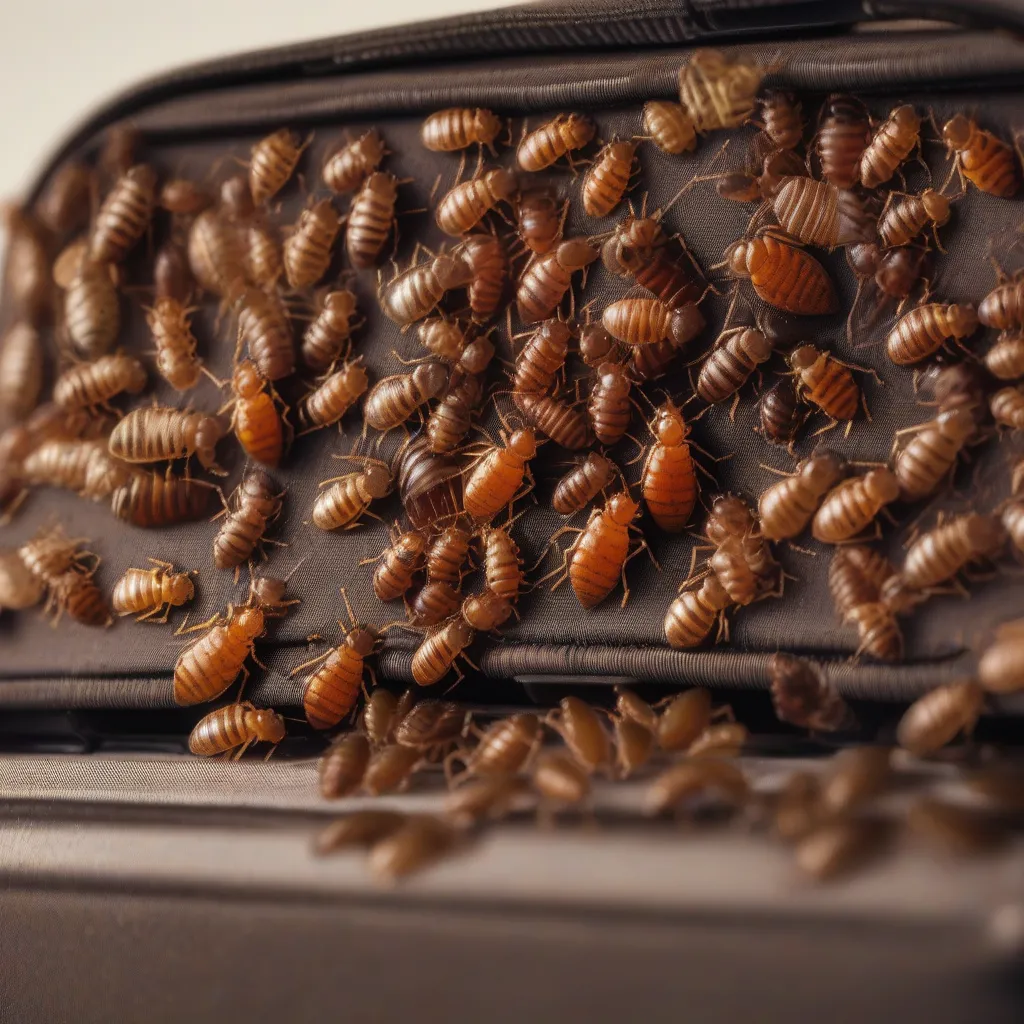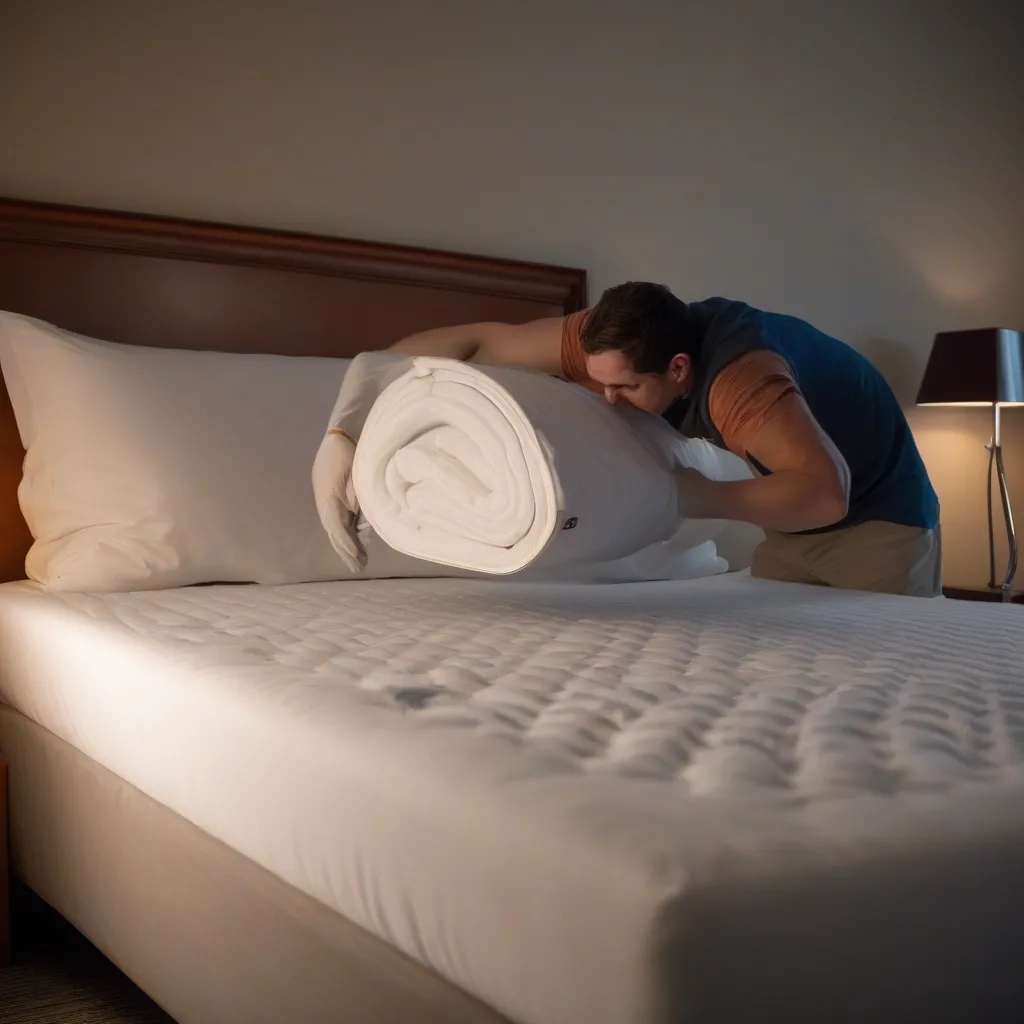Planning a vacation always comes with a tinge of excitement and, let’s face it, a bit of anxiety. We meticulously plan itineraries, book flights, and dream of exotic destinations. But what about the less glamorous side of travel, like those pesky bed bugs we’ve all heard horror stories about? One question lingers in the minds of many travelers: Do Bed Bugs Travel On Humans?
Imagine this: You’ve just returned from a magical trip to Bali, the “Island of Gods”, with its breathtaking beaches and ancient temples. As you unpack your suitcase, a sense of dread washes over you. Could you have unknowingly brought back some unwelcome guests from paradise?
Let’s unpack the truth about bed bugs and how you can protect yourself on your next adventure.
The Hitchhiking Habits of Bed Bugs
The short answer is yes, bed bugs can travel on humans. However, they don’t have a free pass. Here’s the breakdown:
How Bed Bugs Hitch a Ride
Unlike fleas or ticks, bed bugs don’t burrow into skin or live on humans. They are opportunistic hitchhikers, attracted by the warmth and carbon dioxide we emit. They climb aboard luggage, backpacks, clothing, and yes, even directly onto us seeking a free ride to their next blood meal.
Where They Lurk
Think of bed bugs as ninjas of the insect world. They love to hide in dark, cramped spaces:
- Hotel Rooms: Mattresses, bed frames, headboards, nightstands, even electrical outlets are prime real estate.
- Public Transportation: They can sneak onto airplanes, trains, and buses, hiding in seat crevices and luggage compartments.
- Homes and Apartments: Don’t think your home is immune! They can be transported from infested areas via furniture, clothing, or even visitors.
Debunking the Myths
Myth: Bed bugs are a sign of uncleanliness.
Fact: Bed bugs are not picky about cleanliness. They are found in even the most pristine hotels and homes. It’s all about opportunity, not hygiene.
Myth: Bed bugs can fly.
Fact: Bed bugs cannot fly. They crawl and are surprisingly quick, which is how they often go unnoticed.
 Bed Bugs on Luggage
Bed Bugs on Luggage
Protecting Yourself: Travel Smart and Bug-Free
Before You Go:
- Research Your Accommodation: Websites like TripAdvisor often have reviews mentioning bed bug encounters.
- Pack Smart: Use hard-sided luggage, which is harder for bed bugs to penetrate. Consider packing clothes in sealed plastic bags for extra protection.
During Your Trip:
- Inspect Your Room: Upon arrival, inspect your hotel room thoroughly. Check mattresses, headboards, and furniture for any signs of bed bugs (live bugs, shed skins, tiny bloodstains).
- Keep Luggage Away: Store your luggage on luggage racks or in bathrooms, away from the bed.
Returning Home:
- Inspect and Wash: Inspect your luggage carefully before bringing it inside. Wash all clothes in hot water and dry on high heat to kill any potential hitchhikers.
- Seek Professional Help: If you suspect an infestation, contact a pest control professional immediately.
Peace of Mind on Your Next Adventure
Remember, encountering bed bugs doesn’t have to ruin your trip. By being informed and taking preventative measures, you can travel smart and bug-free. Now that you’re armed with knowledge, pack your bags, and embrace the joy of exploration!
FAQs about Bed Bugs and Travel
Q: Can bed bugs live in my hair?
A: Bed bugs prefer smooth surfaces and are less likely to be found in hair.
Q: Can I get diseases from bed bugs?
A: While bed bug bites are itchy and unpleasant, they are not known to transmit diseases.
Q: How long can bed bugs live without a blood meal?
A: Bed bugs are incredibly resilient and can survive for several months without feeding.
 Inspecting a Hotel Room for Bed Bugs
Inspecting a Hotel Room for Bed Bugs
For more travel tips and information, visit TRAVELCAR.edu.vn. Happy travels!

